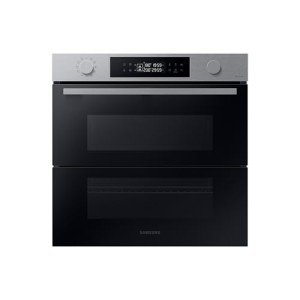The Rise of Built-In Ovens: A Seamless Approach to Modern Cooking
In modern cooking areas, where style looks mix flawlessly with functionality, one home appliance sticks out as a true video game changer: the built-in oven. As house owners and chefs alike continue to look for innovative services that boost their cooking experience, built-in ovens have actually ended up being significantly popular. This post checks out the benefits, considerations, and trends surrounding built-in ovens, highlighting why they are a vital function in contemporary cooking areas.
What is a Built-In Oven?
A built-in oven is a cooking area appliance designed to be integrated into the kitchen cabinetry of a kitchen rather than standing alone. Unlike standard freestanding ovens, which can be moved and placed anywhere, built-in ovens been available in various designs and sizes to fit specifically within designated spaces. Offered in single or double configurations, these ovens provide a structured appearance that complements contemporary kitchen area designs.
Advantages of Built-In Ovens
1. Space-Saving Design
One of the most appealing benefits of built-in ovens is their space-saving design. By integrating click through the next webpage into kitchen cabinetry, you can free up valuable counter and flooring space. This is particularly useful in smaller sized cooking areas, where taking full advantage of room is essential. Built-in ovens can be installed at eye level, making them more accessible and minimizing the need to flex down.
2. Visual Appeal
Built-in ovens add to a streamlined and cohesive cooking area style. Readily available in various surfaces-- such as stainless-steel, black, white, and customized cabinets-- they can mix perfectly into the total design. This visual appeal improves the kitchen area's visual harmony and raises the space, producing a modern-day and advanced environment.
3. Improved Functionality
Numerous built-in ovens come geared up with sophisticated cooking innovations, such as convection cooking, steam ovens, and clever features. These improvements permit for flexible cooking alternatives, making it much easier to achieve professional-level outcomes in your home. Smart built-in ovens can even link to Wi-Fi, enabling users to control the oven from another location, get alerts, and access a variety of cooking programs and dishes.
4. Improved Ventilation
Because built-in ovens can be integrated with cooking area hoods and ventilation systems, they can assist preserve much better air quality and minimize cooking smells. This is especially substantial for those who like to prepare with aromatic spices and active ingredients, as a reliable ventilation system can keep the kitchen comfy and welcoming.
5. Customization Options
Built-in ovens offer a vast array of modification alternatives to match specific cooking styles and needs. From professional-grade devices with several cooking modes to compact designs for smaller kitchen areas, property owners can choose the oven that fits their specific requirements. Lots of manufacturers also use customizable front panels, allowing you to match the oven's appearance to your kitchen cabinetry for a really merged appearance.
Considerations When Choosing a Built-In Oven
While built-in ovens have many advantages, there are necessary considerations to bear in mind before buying:
1. Rate
Built-in ovens typically include a higher price tag than their freestanding counterparts due to their style and installation requirements. It's essential to consider both the cost of the oven and any extra costs related to kitchen cabinetry modifications or setup.
2. Installation Requirements
Setting up a built-in oven often requires expert support, specifically if you need to modify existing cabinetry. Guarantee that you consider any costs connected with installation, consisting of labor and possible cabinetry modifications.
3. Size and Dimensions
Before purchasing a built-in oven, measure the designated area accurately to make sure a correct fit. Built-in ovens can be found in numerous sizes and setups, so selecting one that lines up with your needs and cooking area style is crucial.
4. Lifestyle and Usage
Consider your cooking routines and requires when choosing a built-in oven. If you frequently host large events, a double oven may be more beneficial. On the other hand, if you have a compact kitchen area, a single-wall oven might be enough.
Trends in Built-In Ovens
The kitchen device market is continuously progressing, and built-in ovens are not exempt from emerging trends. Some present patterns consist of:

Smart Technology Integration: With the increase of wise home innovation, built-in ovens now typically feature connection choices. This permits users to keep track of cooking development and change settings through mobile apps.
Energy Efficiency: As sustainability ends up being a priority, lots of makers are purchasing energy-efficient built-in ovens that decrease energy intake while maintaining performance.
Multi-functional Designs: Built-in ovens now use features such as air frying, sluggish cooking, and steaming, supplying adaptability that meets a wide variety of cooking approaches.
Conclusion
Built-in ovens undoubtedly represent an ideal blend of design, function, and convenience in today's cooking areas. As more property owners go with this contemporary solution, the focus shifts to producing a cooking area that is as visually pleasing as it is practical. Whether you are constructing a brand-new home or remodeling your cooking area, thinking about a built-in oven could elevate your cooking experience and change your cooking area into an elegant and practical haven. With a variety of choices readily available and continuous innovations in technology, built-in ovens remain a standout choice for both beginner cooks and culinary lovers alike.
